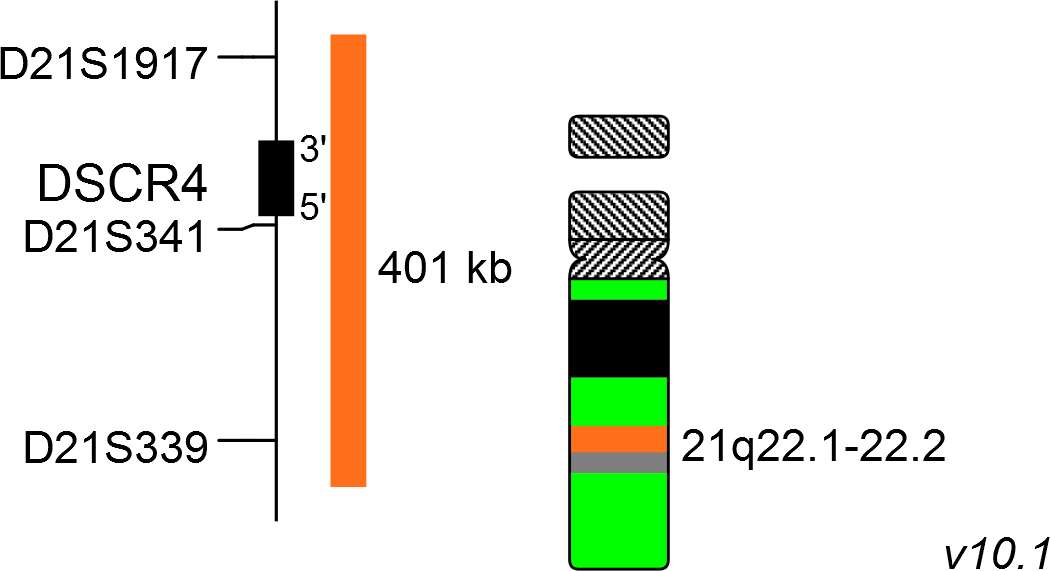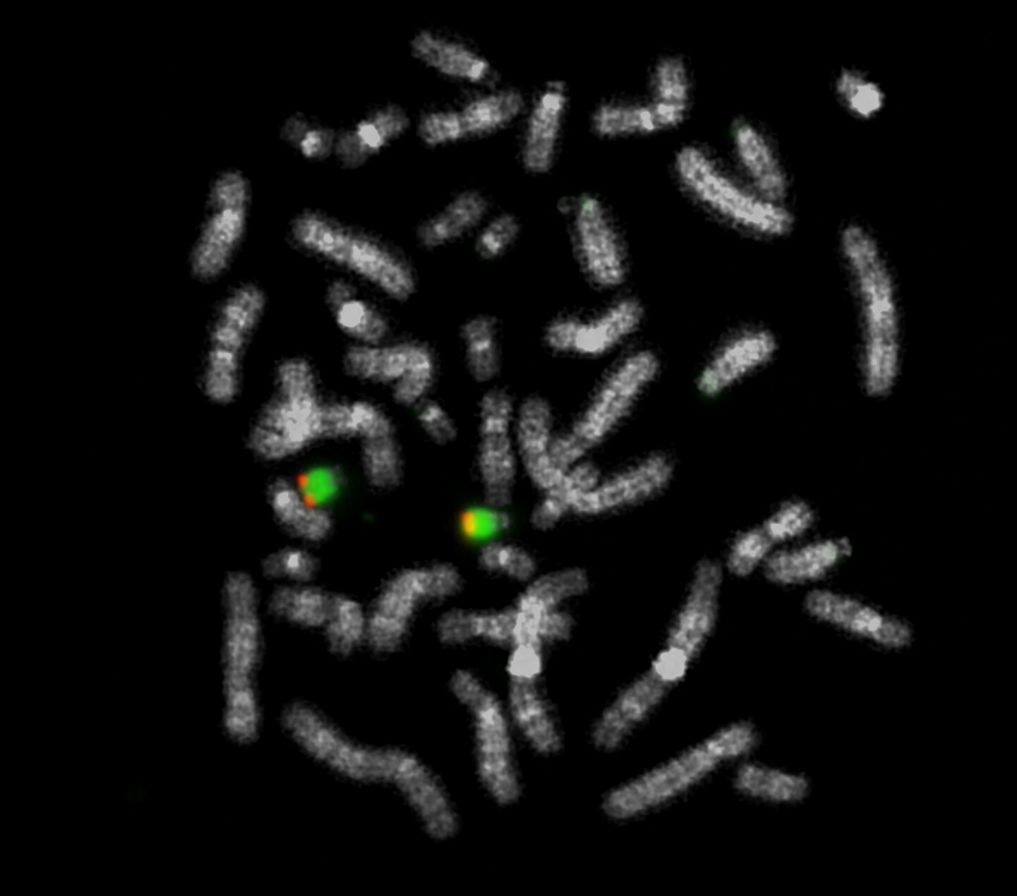
XL 21q22 /
XCP 21
- Order Number
- D-5441-050-OG
- Package Size
- 50 µl (5 Tests)
- Chromosome
- 2121
- Regulatory Status
- RUO

The XL 21q22/XCP 21 is a combination of a whole chromosome paint 21 in green with an orange labeled locus-specific probe for 21q22. This probe allows analysis of copy numbers and structural aberrations of chromosome 21 on metaphase chromosomes.
XL 21q22/XCP 21 hybridized to normal human metaphase spreads will result in green signals along the entire length of chromosome 21 combined with orange signals at 21q22 (Down Syndrome Critical Region 4).
Please note that this product is not classified as an IVD product in the EU according to the REGULATION (EU) 2017/746 OF THE EUROPEAN PARLIAMENT AND OF THE COUNCIL of 5 April 2017 on in vitro diagnostic medical devices and repealing Directive 98/79/EC and Commission Decision 2010/227/EU. It is marked as for ´Research Use Only´ (RUO).
Probe maps for selected products have been updated. These updates ensure a consistent presentation of all gaps larger than 10 kb including adjustments to markers, genes, and related elements. This update does not affect the device characteristics or product composition. Please refer to the list to find out which products now include updated probe maps.
Probe map details are based on UCSC Genome Browser GRCh37/hg19, with map components not to scale.





